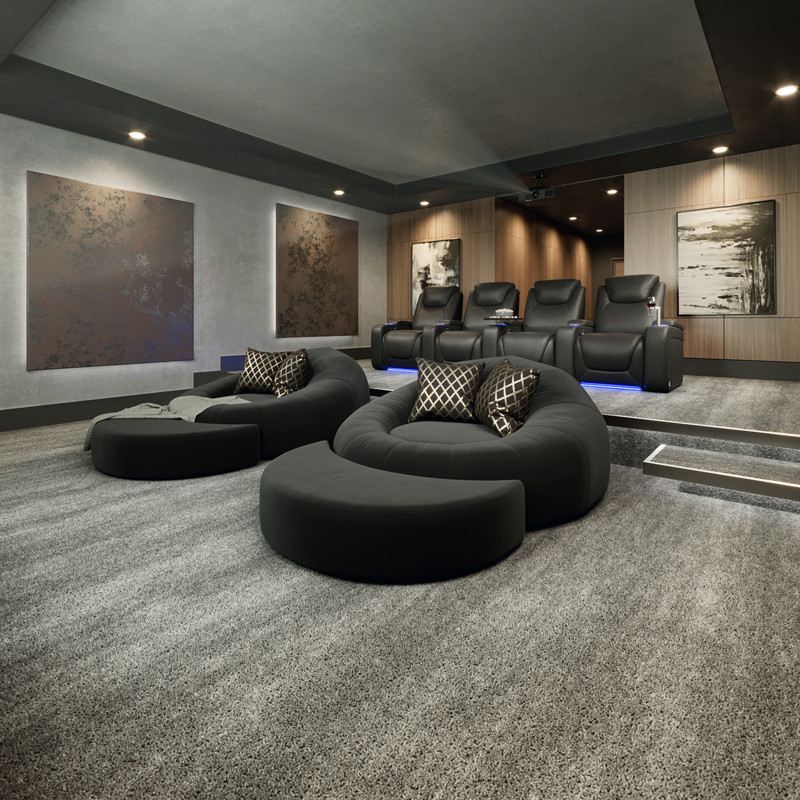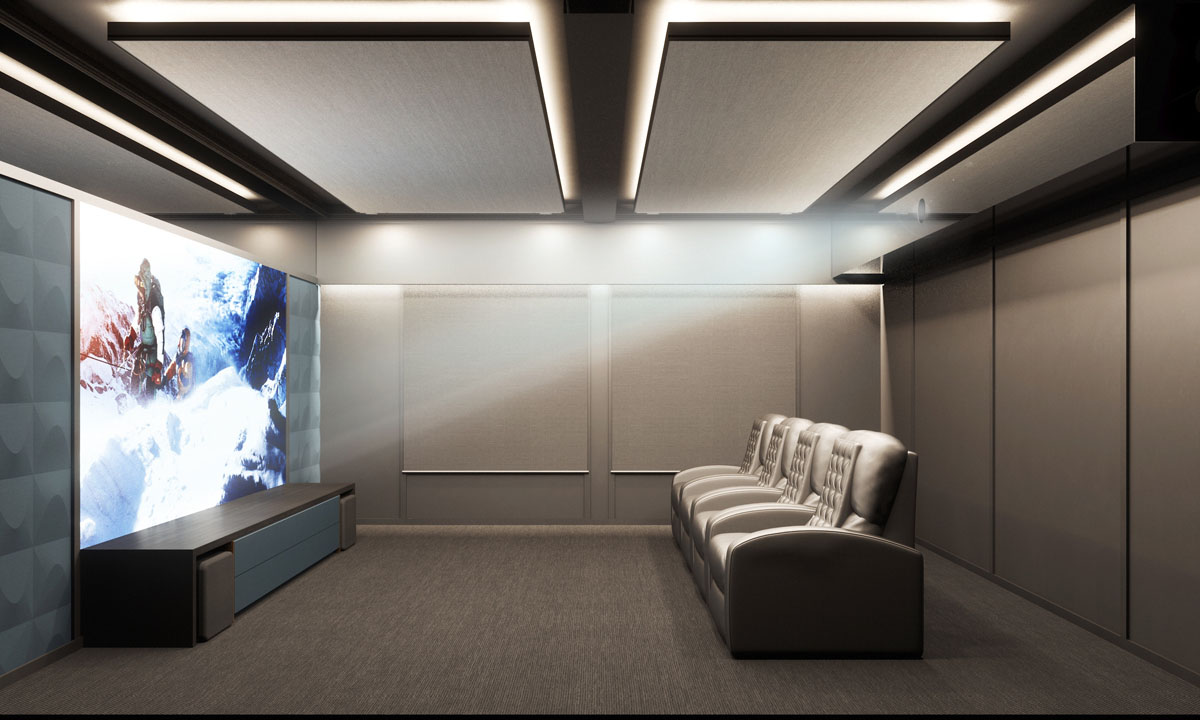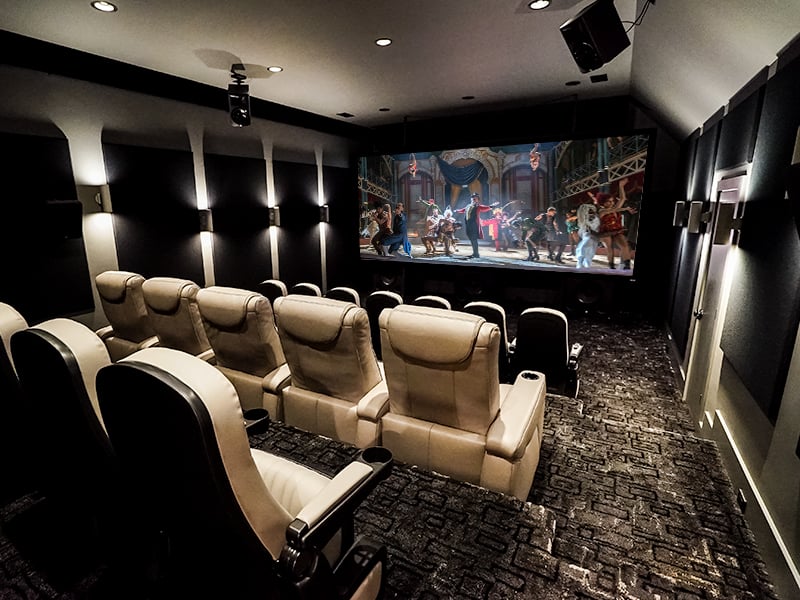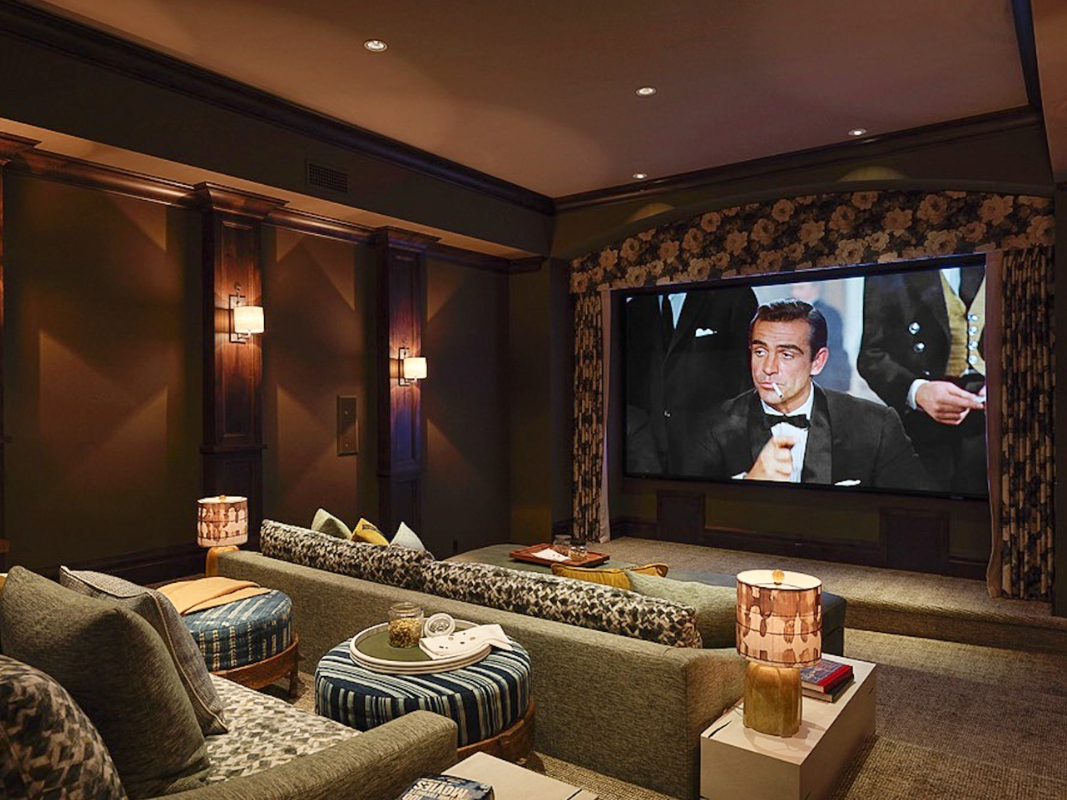Home Theater 101: Everything You Need to Know for a Motion Picture Experience at Home
Developing a home cinema that measures up to the cinematic experience of an industrial theatre involves careful consideration of multiple parts, consisting of screen choice, audio systems, and room format. Whether you are pondering the excellent display dimension or the complexities of surround sound, understanding these principles is essential.
Picking the Right Screen
When establishing a home movie theater, selecting the right display can make or break the checking out experience - home theater installation tampa. The screen acts as the centerpiece of your setup, affecting image quality, checking out angles, and overall aesthetic. Trick aspects to think about consist of display resolution, type, and dimension
First, establish the appropriate screen size based upon your area dimensions and seating range. A general standard is to sit about 1.5 to 2.5 times the diagonal display size for optimum viewing. Next off, pick in between numerous screen kinds, such as fixed-frame, motorized, or retracting screens, each offering unique benefits. Fixed-frame displays usually provide the very best photo high quality, while motorized choices enable versatility in space use.
Resolution is an additional critical variable. For a really immersive experience, consider a screen developed for 4K or also 8K web content, making sure intensity and clarity. Furthermore, take into consideration the screen's gain, which influences brightness and contrast; a higher gain can boost brightness in well-lit rooms, while a lower gain might be preferable for darker environments.
Picking Sound Equipment
Audio equipment is an important element of any kind of home theater system, substantially boosting the total viewing experience. The selection of audio gear can figure out the deepness, clarity, and immersion of noise, vital for producing a motion picture atmosphere.
When choosing audio tools, take into consideration a surround stereo, which typically includes a receiver, several speakers, and a subwoofer. A 5.1 or 7.1 network system is suggested, where the initial number stands for the speakers and the 2nd the speaker, supplying an immersive soundscape. The receiver is the heart of the system, handling audio and video clip signals, and ought to support modern formats like Dolby Atmos for an improved spatial experience.
Quality speakers are vital; search for designs that supply a balanced audio account with good bass feedback. Floor-standing audio speakers can create richer noise, while bookshelf alternatives save space. Additionally, consider cordless choices for ease of installation, although wired systems often supply premium performance.

Optimum Seating Plans
Producing a suitable home movie theater experience hinges dramatically on ideal seating plans. The plan of seats plays an important duty in both convenience and seeing high quality, straight influencing the total cinematic experience.
First, take into consideration the display dimension and watching range. An usual standard is to place seats at a distance approximately 1.5 to 2.5 times the angled dimension of the screen. This makes sure an immersive experience without straining the eyes.
Following, altitude is important. If your seats is in a tiered format, the back rows need to be greater than the front to avoid blockages. For level seating, guarantee that the front row is not too near the display, and that everybody has a clear line of vision.
Furthermore, consider the plan in terms of social dynamics. Group seats can enhance the common experience, while private seats might be liked for personal viewing.

Lastly, focus on convenience with ergonomic seating that supports extensive viewing periods. Incorporating recliners or cushioned seats can significantly improve the experience, making the home theater a preferred destination for both home entertainment and relaxation.
Lighting and Setting
Effective illumination and ambiance are important parts of a properly designed home cinema, as they considerably affect the viewing experience. The appropriate lighting can improve the motion picture feeling, while bad choices can detract from it. For ideal outcomes, consider a split lights approach that includes ambient, task, and accent lights.
Ambient lights provides general illumination, making certain that the space is not completely dark, which can strain the eyes. Dimmer switches are extremely advised, permitting adjustments based on the content being checked out. Job illumination, such as wall surface sconces or floor lights, visit this page uses useful lighting for activities like reading or browsing the room without disrupting the overall ambience.
Accent illumination can be utilized to highlight building features or develop focal factors, including deepness and rate of interest to the room. LED strip lights behind displays or along shelves can supply a refined radiance that boosts the aesthetic experience without frustrating the customer.

Wiring and Installation Tips
A well-planned wiring arrangement is important for accomplishing optimal performance in your house cinema system. Appropriate electrical wiring not only ensures high-quality audio and video clip signals however likewise enhances the total visual of your area. Begin by mapping out your format, recognizing where each element will be positioned, including your display, speakers, and receiver.
When picking wires, prioritize top quality, appropriately assessed wiring to reduce signal loss. HDMI cords ought to be made use of for video clip links, while audio speaker wire need to match the specs of your speakers and amplifier. Decide for in-wall rated cables to abide by safety criteria and preserve a tidy look.

Conclusion
In recap, developing an outstanding home movie theater experience requires cautious factor to consider of different components, consisting of screen choice, audio tools, seating arrangements, lights, and electrical wiring. Each part plays an important function in accomplishing optimum efficiency and atmosphere, inevitably enhancing the enjoyment of home enjoyment. By focusing on these elements, a motion picture environment can be efficiently reproduced, enabling immersive seeing experiences that equal traditional theater setups. Attention to detail in each area click to read more is essential for total contentment.
Creating a home theater that rivals the cinematic experience of an industrial theatre involves careful consideration of several parts, including screen choice, audio systems, and area layout.When establishing up a home cinema, picking the ideal display can make or break the seeing experience. Next, pick between various display types, such as fixed-frame, motorized, or retractable screens, each offering distinctive advantages. For a genuinely immersive experience, think about a screen developed for 4K or also 8K material, guaranteeing sharpness and additional hints clarity.In recap, producing a remarkable home theater experience requires careful factor to consider of different elements, consisting of display choice, audio equipment, seating setups, illumination, and wiring.